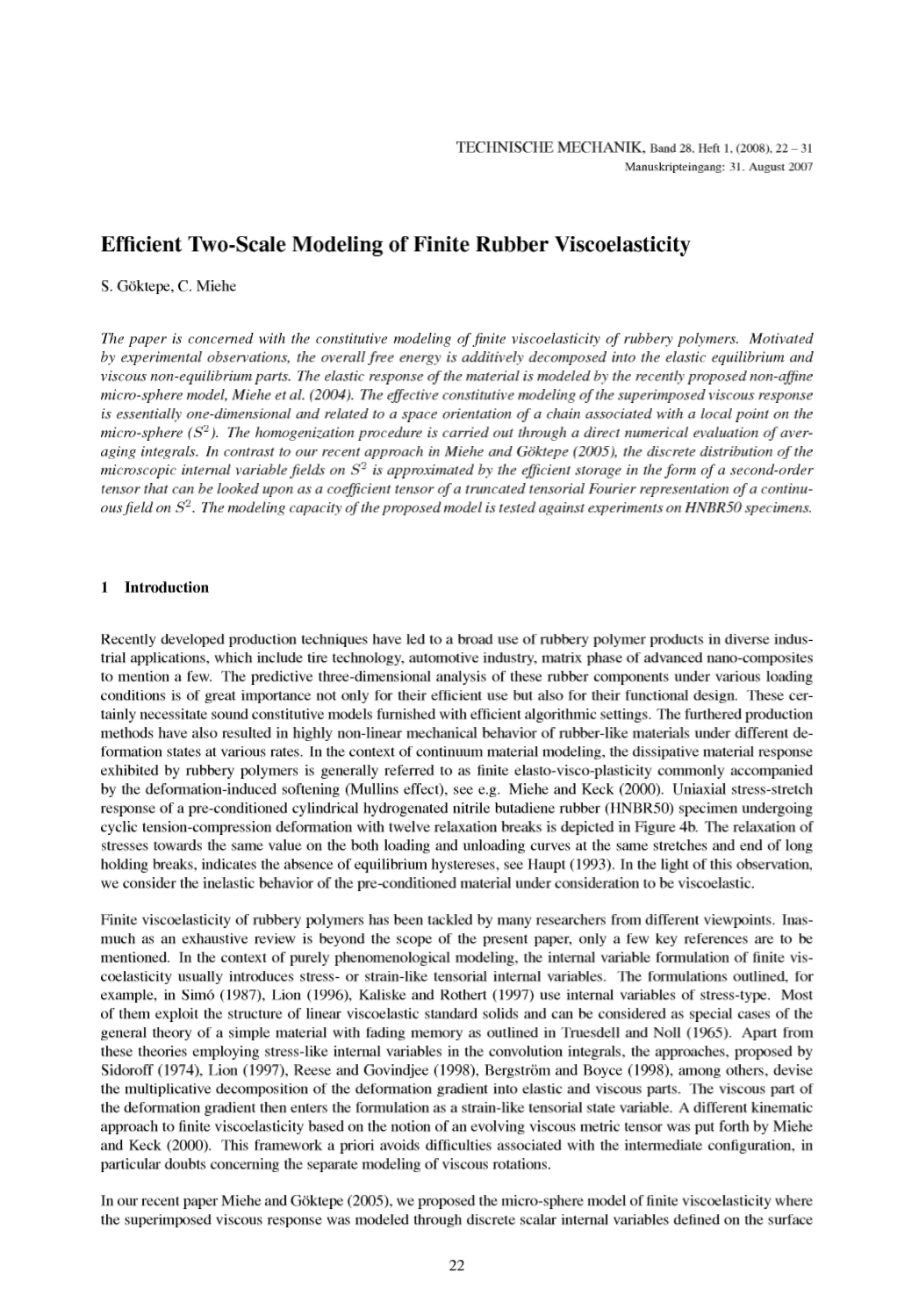Efficient Two-Scale Modeling of Finite Rubber Viscoelasticity
Abstract
The paper is concerned with the constitutive modeling of finite viscoelasticity of rubbery polymers. Motivated by experimental observations, the overall free energy is additively decomposed into the elastic equilibrium and viscous non-equilibrium parts. The elastic response of the material is modeled by the recently proposed non-affine micro-sphere model, Miehe et al. (2004). The effective constitutive modeling of the superimposed viscous response is essentially one-dimensional and related to a space orientation of a chain associated with a local point on the micro-sphere (S2). The homogenization procedure is carried out through a direct numerical evaluation of averaging integrals. In contrast to our recent approach in Miehe and Göktepe (2005), the discrete distribution of the microscopic internal variable fields on S2 is approximated by the efficient storage in the form of a second-oder tensor that can be looked upon as a coefficient tensor of a truncated tensorial Fourier representation of a continuous field on S2. The modeling capacity of the proposed model is tested against experiments on HNBR50 specimes.





